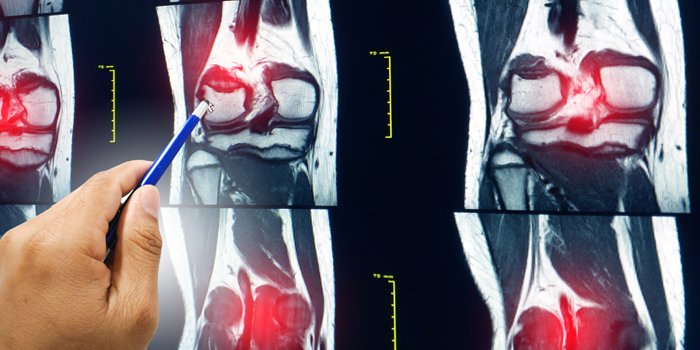
If you're gonna be dumb, you better be tough.
“BAR IS LOADED!”
That familiar phrase, we all know.
Second attempt—a five-pound PR.
Knees wrapped, straps set, belt locked into place. I’d spent the last few months training for the return of the WPO, the biggest multiply meet of the year.
I approached the bar, and even with the commotion everywhere, I felt myself go into autopilot. I've done this a million times before. Right foot out, left foot out, chest pressed against the bar, even out my feet, get my stance. Tighten my lats down, scoop under the bar, slide back into the bar, big air, unrack.
"SIT BACK…"
"OPEN UP…"
"TALL..."
"TALL..."
"BACK..."
"UP!"
My right knee gave out on the way up. What was this? This isn't what we had practiced! The bar fell back, and a rush of people and friends darted in, trying to assist me. “My knee hurts! This sucks! Am I going to be able to try this weight again? Is this it for today?” After being taken off the platform, I realized something bigger than a break in my form had occurred. I was taken to the hallway of what was the biggest meet of my life. Begrudgingly I had my suit cut off, and I was taken to the hospital by car.
WATCH: Swede Burns' Horrifying Bench Press Injury *GRAPHIC CONTENT*
Once accessed by the on-staff physician, I was told it was probably a tear somewhere in the knee, but we couldn't be sure of that or the extent of it until the swelling went down. I'd be able to go for an MRI in the following two to three weeks. SWEET. They wrapped me up, and after a quick lesson in the hospital hallway on how to use crutches, I was sent on my way.
"Have they started benching yet?" was the first question I remember asking as I left the hospital, almost tripping over my crutch. I had it already in my head that I wanted to keep going, at least take a token bench and deadlift to secure a total in the meet I had moved countries to train for—I moved from Toronto, Ontario to Cincinnati, Ohio. You only live once anyway, and who knew, maybe my knee wasn't so bad.
Once I arrived back in the warm-up room with plenty of time to spare until the start of bench, I only had one thing on my mind: get in my shirt and keep going! I would take my original opener as a second after a token first attempt to secure a run at deadlifts. I received quite a few stares as I was limping around trying to warm up in my shirt and crutches. I felt as though people assumed I was dumb for coming back to keep lifting. They weren't completely wrong: I knew what I was doing was risky, but I wasn't going to be completely taken out by just a little bum knee. And in the words of Roger Alan Wade, "If you're gonna be dumb, you gotta be tough." This is who I am!
Despite my right leg not being able to fully cock back into my normal bench setup, my first attempt went great. I put my shirt on for my second, and again, the right knee being out of position, I was able to get my original planned bench opener. After being on the fence about taking a third and possibly getting a two-pound PR over my best bench in competition, I decided to go for it. I was here to do my best, and in my head at the time, the worst that could happen was dumping the bar for the spotters to catch. At that rate, a deadlift PR would not have been a thing, as my knee had started to hurt more and more.
Do you know what the sound of a broom makes when it cracks in half?
That's kind of what I and I think a lot of people heard when I realized my arm was no longer doing normal arm stuff.
ARE YOU FUCKING KIDDING ME?
In so much shock, I walked off the platform, gripping my left wrist and forearm without a limp in my step anymore. Fast forward through the fit of anger in the back hallway on the way to the hospital (this time in an ambulance!). I asked not to be taken to the same one as last time because I was embarrassed the lady at the front desk would recognize me. Thankfully the doctors took care of me quickly and pushed for immediate surgery the following morning. I left with a thick plate in both my ulna and radius, held in with seven screws each, and two impressive scars on both sides of my forearm.
As you can see, the bench shirt stayed on. We were able to pull it off without damaging it, and I still use it to this day.
All this may seem a little sensationalized, but this is really the gist of how the day unfolded and how it felt. I've left many personal details out and highlighted what I think was needed to be shared to explain my headspace.
Now, to get into how someone can come back from a day like that. Tons of people have broken bones and torn muscles and ligaments before, in and out of competition, and this is just one of those stories.
The healing process for injuries can differ from person to person. Depending on age, fitness level, overall health, and sex. It’s assumed that a young, healthy, athletic male could have an easier time healing from major injuries than a little old grandma. So for reference, at the time of the injuries, I was 27 years old, nesting comfortably in the "maybe she'll come back, maybe she won't" group.
The first two to three weeks were rough. I couldn't walk down a set of stairs (butt walking was a thing) or walk with my crutches for more than a few minutes without major arm pain. Sleeping was a no, getting in and out of bed caused immense pain, getting in and out of cars was a ten-step process, the list goes on... Day to day tasks we take for granted had now become a huge chore. I couldn't even shower, wash my hair, or sit on the toilet without having to worry about how I was going to do it and who I could ask for help. How's a girl supposed to poop around here?
One of the best things I did for myself was to start loading up on calcium and vitamin D right away. I found good results from a good diet filled with protein as well. Water was essential as always, about a gallon a day or more. My diet was pretty much what you would expect it to be while trying to make muscle gains during an offseason or heavy training cycle. I gained a little extra weight, but ultimately I really wanted to make sure my body had everything needed to heal.
Around the three-week post-op mark, I had started going to the gym and doing anything moderate I could to get blood flow into my leg. At the time, I was still giving my arm a little more time. If it hurt, I shut it down or tried something else. I never pushed through the pain. I did a lot of simple knee stabilizing exercises; heel elevated step-ups to a very low step, high box squats with minimal weight (if any), Zercher harness conventional deadlifts from pins above the knee, stiff leg deadlifts with light weights, etc. I did these for another month or so, increasing the weight if it didn't hurt.
I will mention to anyone going through a similar situation; you're going to need to be patient with yourself. The number of times I wanted to stop, cry, and crawl home were weekly, if not daily events. I didn't get an MRI until about five weeks in, where the doctor told me it was a full ACL tear and some medial meniscus damage. I opted not to go for surgery because, at that point, I was already feeling stable again from the exercises I was doing and didn't want to be out for another six to eight months.
The first time I benched the bar again was around four weeks post-op. I would be lying if I said it was easy to get under the bar again. I knew if I wanted to get back to the sport I loved the most, I needed to remove all doubt in myself. A wise training partner once said to me, "Powerlifting is 90% mental, and the rest is just in your head," and this was no exception to that statement. From there, once or twice a week, I was able to take a bit more weight than the week prior. I started to throw two to four accessories into my sessions, mostly consisting of isolating and controlled vertical movements: things like single-arm dumbbell floor presses, single-arm pulldowns and rows, light tricep pushdowns on the assisted dip machine, and high straight bar cable rows. The weight started to build back up with time, but I would shut any movement down that hurt deep into my bones.
Around the two-month mark, I decided it was time to focus on a new goal. I chose to sign up for a raw meet about six months post-op, feeling confident if I focused on having fun and not pushing past my comfort zone this time, it would ultimately also help my mental game. The idea at the time was the sooner I got back up on the horse, the better...
During this time, I was still eating extra protein and taking calcium every day and had massage therapy done on my arm at least once a month. I also had at least two more X-rays done of my arm to ensure progress and new bone growth was taking place. I started including other exercises in waves and stuck to more of a 5x5 style program. When it came time to peak for the meet, I planned to phase out the volume and work up to moderate singles on main movements. At the time, deadlifting conventional was my best option because the pressure on my knee to perform sumo was too risky. I also switched from right hand over/left arm under to right arm under/left arm over because my arm didn't want to supinate like that yet.
If you're returning from a major injury and want to find a meet to do, do one close to your heart. The amount of love I have for Laura Phelps and what she has done for me as a lifter meant one thing: the meet I do every year, surrounded by and competing with all my friends and sisters, would be my comeback meet (Laura’s annual Women’s Pro-Am). The emotional build-up was real. I cried getting my rack height, and I was terrified of people watching me. “What if I broke something again? What if my knee blows out on squats?” These thoughts sometimes still haunt me to this day but are almost completely gone now. I’m proud of how I performed at my first meet back, nine for nine, only six months post-op.
Getting back into my gear after a big break was a mindfuck, but it wasn’t impossible. I took my time and sprinkled just a little bit of crazy on top. I’m not suggesting throwing on a suit and havin' at her with some reverse bands right out of the gate, but I would suggest listening to your body and not always to the fear in your head. The mind has evolved to keep you safe for longer than any society has existed. Sometimes it’s up to us to determine when the fear is valid and when it is in the way of the bigger picture.
What seemed to be a good progression for me was a slow build-up in my gear. Here is the general outline of how I introduced my gear back into a conjugate style program:
Squat
I started in briefs for a few weeks (two to four) to a high box, then progressed to a regular box, then no box. Suit straps were down with the box progression. Suit straps up, same box progression again. We added wraps at the very end of all of this. I never used any accommodating resistance and would just build up to a heavy single before my form felt like it would break and shut it down.
Bench
I started in a Sling Shot for a few weeks, then went to single ply for a few months. Again, no overloading with the shirt, no chains or bands, just full range straight weight for the first while, and maybe a board press here and there if I was feeling confident. Eventually, I transitioned back into a multiply shirt in the same fashion.
Deadlift
Sumo came back steadily with less pain, but with both squat and deadlift stances, I came in a bit to decrease shearing on the knee from being ultra-wide. Ultimately this was a blessing in disguise because it's also added 70 pounds to my deadlift.
Having a good team is key to getting comfortable back under significant weight. If it weren't for my training partners, I don't think I would have had the confidence to trust just anyone with spotting me. I am forever thankful for the crew I had during this time.
I competed in my first geared meet almost one year after the injuries. At this point, I had been very mindful of my incoming thoughts and how I responded to them. I knew coming back would be more of a mental win for me than a PR. It was one of the scariest and most rewarding days of my life.
As I write this, I'm getting ready for my fourth meet back since the injury almost two years ago. I'm finally back to the numbers I was at pre-injury. What I can say I have learned from all of this is that despite what is happening around us or in our heads, we can always be in control of our reactions. How you choose to react to a bad situation will either make you stronger or inevitably break you. From sleeping on the streets and fist fighting at a young age to losing both parents within seven months and surviving an abusive relationship, I have been through some rough times, as many of you I am sure have. Practicing gratitude for what you do have, practicing a positive mental attitude, and surrounding yourself with positive and motivating friends in the same things as you is the key to any story of success. I owe a lot of my recovery to the people who showed up and traveled this road with me. I love powerlifting with my entire soul because it has given me a purpose. Breaking my arm and busting my knee really could have taken that purpose from me, but every day I chose that this life is mine to create.
Header image credit: April KASA © 123rf.com
Chanel Nolet Slater is a Canadian-born multiply powerlifter. While primarily competing in the US for the last seven years, she has accomplished a 1278-pound total at 148. Her best single lifts in competition are a 540-pound squat, 347-pound bench, and a 474-pound deadlift. Chanel's formal education is in advanced health and fitness, and she currently works in the meat processing and butchery industry. Coaching athletes and instilling the values of teamwork and building others is her current passion—she absolutely loves the old-school powerlifting attitude and nose-bleeding squats.










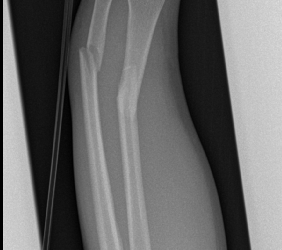
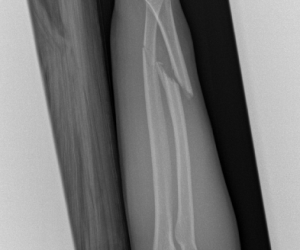
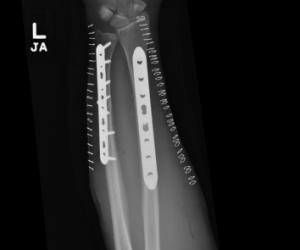
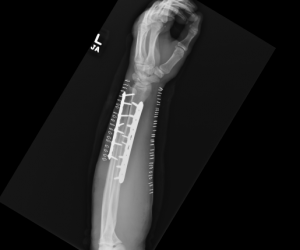

Tom